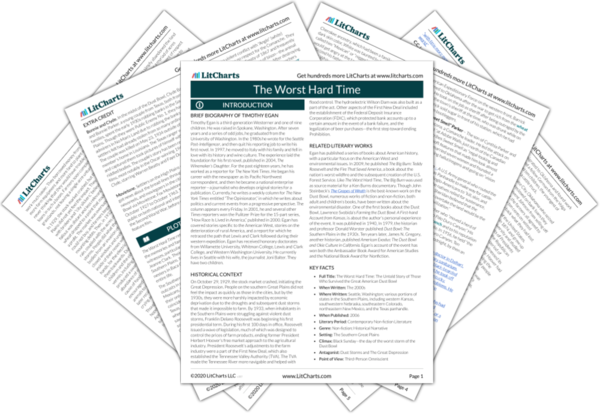The air had become toxic and Jeanne, like many children, had contracted dust pneumonia. There was a cruel irony in Walton’s original decision to leave New York for the cleaner air of the prairie, as the prairie, like the city, had now developed dangerous air as a result of human activity.
